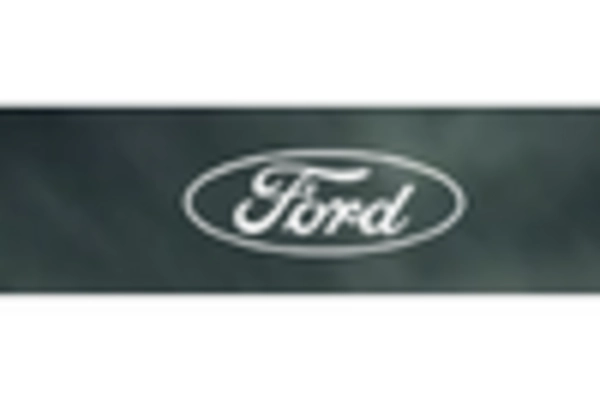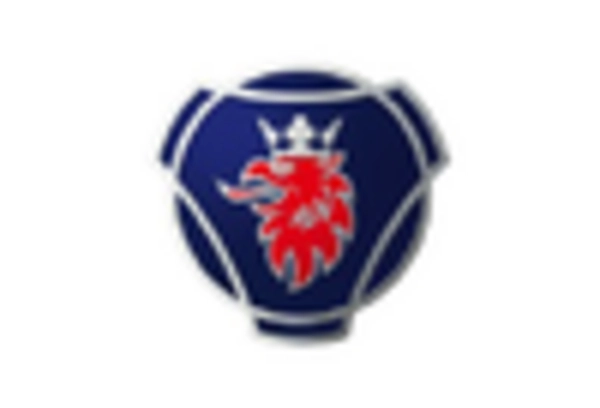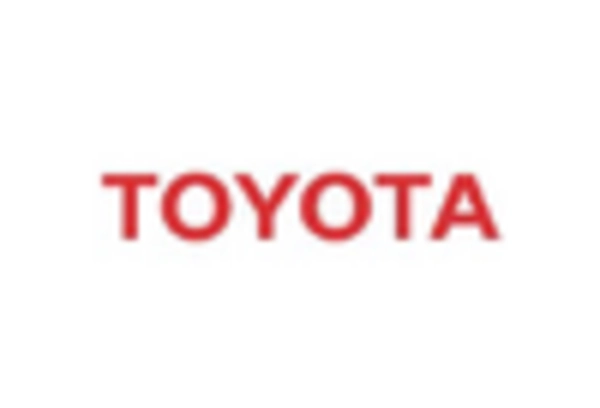Enhanced Safety Features
Safety remains a paramount concern in the Automotive Platooning System Market. The implementation of platooning technology is associated with enhanced safety features that can significantly reduce the likelihood of accidents. By utilizing vehicle-to-vehicle (V2V) communication, platooning systems allow vehicles to share critical information in real-time, such as speed and braking status. This interconnectedness can lead to quicker reaction times and improved decision-making, potentially decreasing collision rates. According to recent data, the adoption of such technologies could reduce road accidents by up to 30 percent. As safety regulations become more stringent, the Automotive Platooning System Market is likely to benefit from increased demand for systems that prioritize safety and reliability.
Regulatory Framework and Support
The Automotive Platooning System Market is influenced by the evolving regulatory framework and support from governmental bodies. As the technology matures, regulators are beginning to establish guidelines and standards that facilitate the safe implementation of platooning systems. This regulatory support is crucial for fostering innovation and ensuring that safety measures are in place. Recent initiatives by various governments to promote smart transportation solutions indicate a growing recognition of the benefits of platooning. The establishment of pilot programs and testing environments is likely to encourage further development and adoption of this technology. As regulations become more favorable, the Automotive Platooning System Market is expected to experience accelerated growth, driven by both public and private sector collaboration.
Cost Efficiency in Transportation
The Automotive Platooning System Market is witnessing a surge in interest due to the potential for cost savings in transportation. By enabling vehicles to travel closely together, platooning reduces aerodynamic drag, which can lead to significant fuel savings. Studies indicate that fuel consumption can decrease by up to 10 percent when vehicles are in a platoon. This reduction not only lowers operational costs for fleet operators but also enhances the overall efficiency of logistics and supply chains. As companies seek to optimize their transportation expenses, the adoption of platooning technology appears to be a viable solution. Furthermore, the integration of advanced driver-assistance systems (ADAS) in vehicles is likely to facilitate this transition, making it easier for fleets to implement platooning strategies effectively.
Environmental Sustainability Initiatives
The Automotive Platooning System Market is increasingly aligned with environmental sustainability initiatives. As governments and organizations strive to reduce carbon emissions, platooning technology offers a promising avenue for achieving these goals. By optimizing fuel efficiency and reducing the number of vehicles on the road, platooning can contribute to lower greenhouse gas emissions. Reports suggest that widespread adoption of platooning could lead to a reduction of millions of tons of CO2 emissions annually. This environmental benefit is likely to attract investment and support from both public and private sectors, further driving the growth of the Automotive Platooning System Market. The emphasis on sustainability is expected to shape future regulations and consumer preferences, making platooning an attractive option for eco-conscious stakeholders.
Technological Integration and Innovation
The Automotive Platooning System Market is characterized by rapid technological integration and innovation. The development of advanced sensors, artificial intelligence, and machine learning algorithms is enhancing the capabilities of platooning systems. These technologies enable vehicles to communicate and coordinate with one another more effectively, improving the overall performance of platooning operations. As the automotive industry continues to evolve, the integration of these technologies is likely to lead to more sophisticated and reliable platooning solutions. Market data indicates that investments in research and development for autonomous driving technologies are expected to increase, further propelling the growth of the Automotive Platooning System Market. This trend suggests a future where platooning becomes a standard practice in transportation.

















Leave a Comment